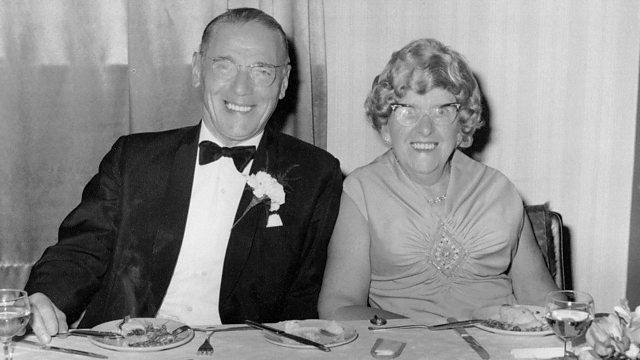Episode 3
How the age of Shipman’s victims was key to understanding how he got away with murdering hundreds of patients in plain sight for nearly 30 years.
This episode opens with the publication of the first report of the public inquiry into the deaths of Shipman’s patients - a report that officially concluded that, while working as a GP, Harold Shipman had murdered 260 of his patients. But how had he got away with killing on such a scale for so long?
Wilson explores the reaction to the staggering total, discovering how commentators came up with a range of theories to try to understand why a seemingly ordinary doctor had killed so many people.
Wilson meets a detective who led a team that questioned Shipman after his conviction about the murders he committed in Todmorden. He reveals how Shipman refused to utter a single word during several days of interrogation – a silence he maintained until he committed suicide in his prison cell, four years into multiple life sentences.
After seeing reports of Shipman’s suicide, a former nurse came forward. She recognised Shipman as a doctor she had worked with as a student nurse at a hospital in Pontefract, West Yorkshire. She had always been troubled by the number of deaths on one of the wards – a ward where she now realised Shipman had worked as a junior doctor. Could he have begun killing there, even before he became a GP?
Wilson tracks down a family whose elderly relative died whilst under Shipman’s care in hospital in Pontefract, as well as another doctor who worked alongside Shipman there. Piecing together their stories, Wilson reveals that not only is it clear that Shipman had begun killing before he qualified as a GP, it is also very likely that Shipman killed at least one child.
The revelation that Shipman had begun killing even before he became a GP and that some of his victims were children is shocking. At the time, the coverage of these revelations differed markedly to the reporting of the deaths of hundreds of Shipman’s elderly victims in Hyde. Wilson asks if these contrasting responses can be explained by the victims’ ages and if that could explain why Shipman targeted mainly elderly patients – not because he was driven by a compulsion to kill old people, but because he knew he would be more likely to get away with it.
Wilson interrogates his own preconceptions about the Shipman case - he had wrongly assumed that Hyde was a town with an above average elderly population and had pictured Shipman’s victims as frail, decrepit, housebound old ladies, when in truth they were mostly fit, active members of their community. Wilson concludes that these preconceptions run through the entire Shipman case, informing an attitude and prejudice towards the elderly that allowed a seemingly ordinary GP to get away with murdering hundreds of people, in plain sight, for nearly 30 years.
Last on
More episodes
Previous
Next
You are at the last episode
See all episodes from The Shipman Files: A Very British Crime Story
Clips
-
![]()
The scale of Shipman’s murders in Hyde
Duration: 02:42
-
![]()
Dr Baboolal on visiting a critically ill child
Duration: 01:04
Music Played
-
![]()
Nils Frahm
Says
-
![]()
Jon Hopkins
Abandon Window
-
![]()
David Holmes
Hey Maggy
-
![]()
Asaf Avidan
Reckoning Song (Acoustic)
-
![]()
Hilary Hahn
Violin Partita No. 2 In D Minor, Bwv 1004: III. Sarabande
Credits
| Role | Contributor |
|---|---|
| Director | Chris Wilson |
| Executive Producer | Nancy Bornat |
| Production Manager | Lynn Philpott |
| Production Company | Wall to Wall Media |




